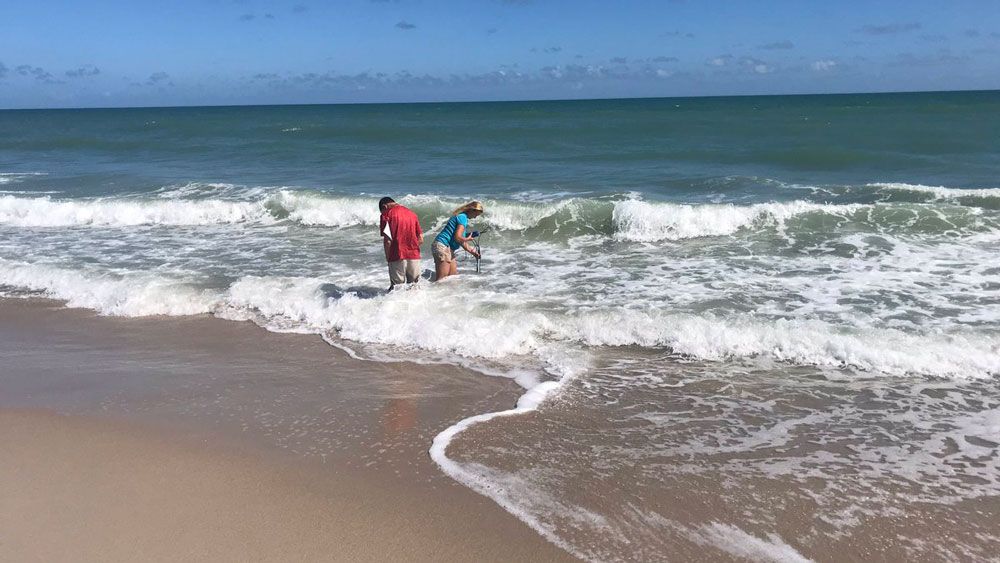MELBOURNE, Florida — Brevard County officials say preliminary tests confirm the presence of Florida Red Tide at some beaches, with high levels found in at least one case.
- Tests confirm presence of red tide on some Brevard beaches
- Varying levels of Red Tide, Karenia Brevis found at multiple beaches
- Biologists: K. Brevis different from other forms of red tide
Red Tide tests were conducted Tuesday at several sites along the coast, as beachgoers complained of respiratory irritation, and dead fish washed up on some beaches.
High levels of Florida Red Tide, Karenia Brevis, were found at Pelican Beach Park in Satellite Beach, at 1.35 million cells per liter.
Medium levels of K. Brevis were found at Seventh Avenue and Wave Crest Avenue beach approach in Indialantic, and in Melbourne Beach at Spessard Holland South and Coconut Point Park.
Background levels were found at the 15th Avenue beach approach in Cocoa Beach. Officials are still waiting on test results from Juan Ponce de Leon Landing in Melbourne Beach.
“My nose, mouth, and throat has been acting up,” said Maria Gladue, a beachgoer visiting from Connecticut.
Glaude and her husband were at Melbourne Beach briefly before heading to Hightower Beach Park in Satellite Beach.
"I have been coughing since I have been here, and my husband has too, and I have been walking and hearing (coughing), which I think its very odd,” she said.
K. Brevis is different from other forms of red tide. Biologists say it forms in the Gulf of Mexico and is then brought to the coast somehow.
Once at the coast, natural and manmade nutrients, especially those rich in phosphorus and nitrogen, are believed to provide nourishment for the algae, causing it to spread.
The current red tide bloom along the Gulfcoast started in Fall 2017 and has since spread around the tip of Florida up the east coast.
It's a lengthy red tide bloom, but not the longest. Scientists say the longest period a red tide bloom lasted was 18 months. But this one has been deadly, killing thousands of fish, manatees, turtles and other marine life.
Reporter Matt Fernandez contributed to this story.








